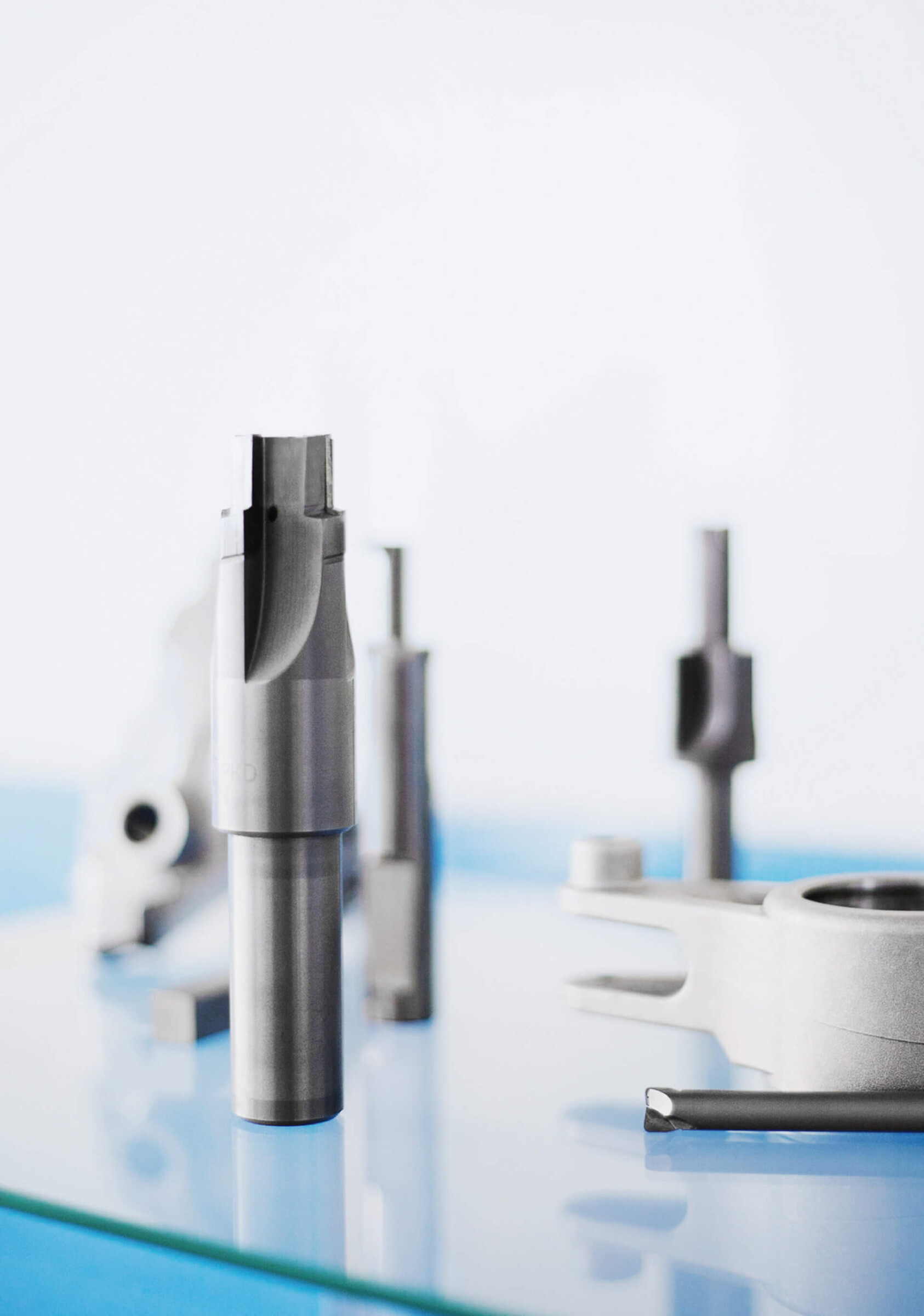
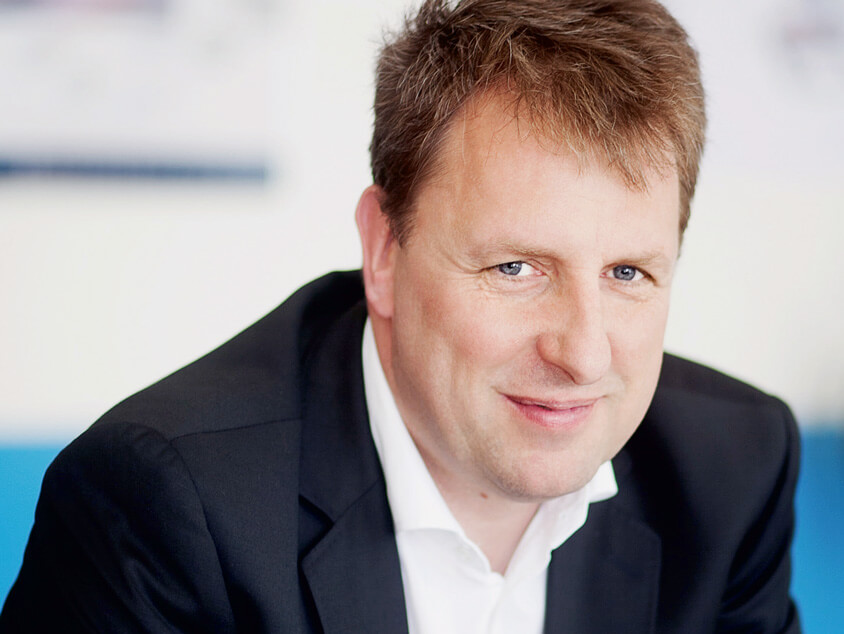
Karl J. Lütticke stepped down in 2005 and his daughter Britta Weinberger and his son-in-law Stephan Weinberger took over the company together.
When it comes to high-performance machining in industry, tools with cutting edges of PCD (polycrystalline diamond) and CBN (cubic crystalline boron nitride) have become firmly established – among other things in the automotive sector and in the machining of graphite and of carbon-fibre- and glass-fibre-reinforced plastics. PROFILE magazine spoke to Stephan Weinberger, Management Director of innovative tool specialist Lütticke GmbH, about the production and machining of such tools.
Mr Weinberger, some women’s eyes light up when they hear the word “diamonds”. How do the polycrystalline diamonds that you process differ from the decorative variety?
Weinberger: Diamonds for jewellery are usually natural polycrystalline gemstones. They are bright, and they gleam and refract the light in its many facets. PCDs, on the other hand, consist of polycrystalline, synthetically produced diamond grains that are bonded together in a matrix usually consisting of cobalt and other substances. “True” diamonds can be immediately distinguished from PCDs by their outward appearance. A PCD is usually black and not very attractive. However, what they both have in common is their very high strength, although the two types of diamond differ greatly in their amenability to machining. Whereas a natural gem can often only be ground in a single direction, a PCD can be ground, eroded and lasered.
What steps have to be taken to make a high-performance tool out of PCD?
Weinberger: We use PCD for the cutting edge. For this, we first produce a tool carrier. We usually buy the PCD in 70 mm round blanks. We cut them by wire erosion, and braze the matching blade into the carrier and then finish it. This can be by grinding it or wire-cutting it with the aid of the fine finishing generator.
For your EDM work, you have been using Mitsubishi machines like the MV1200, FA20 VS and BA 8 for almost 30 years. What do you like about the machines?
Weinberger: There are a number of points. We’re very happy with the after-sales service. Operation is intuitive and the programming system neatly structured, and our staff are immediately able to handle it reliably. We have of course tried out a number of rival products over the years, but we weren’t impressed by the trials.
In which production areas do you used EDM machines?
Weinberger: We use them for the preliminary machining of tools, which means cutting the blanks. We grind the insert seats with the required precision. If the customer wants particularly high precision, we wire-cut the recesses for the PCD blades. With this form of machining, we work with a tolerance range of 5 µm when preparing the tool carrier. We basically produce small series, although we also have products in our portfolio machined in numbers of up to 200. The average batch size with PCD is 3 to 5.
Last year you invested in two new Mitsubishi MV1200S wire EDM machines. Are these additions to your machine park or replacements for older models?
Weinberger: The new MV machines are extensions to our range of machining options. For the Scandinavian market, we have reorganised our field service, and this has yielded a good number of wire-cutting jobs. One of the machines is working to a high level of capacity. We’ve equipped the second machine with a clocked axis. It is a redundant system that steps in to handle the existing workload in the event of a machine failure or maintenance. This sounds costly, and it is. But we work for the automotive industry and if we can’t meet our deadlines, we lose the customer. Also, we’ve just reached the limits of our capacity again. All our machines are in operation. We have very little downtime. Our production department operates with flexitime shifts from 5 am to 7 pm. After this, we let most of the machines work into the night. Our automation cell runs 24/7.
What are the advantages of the MV system in your view?
Weinberger: Allow me to concentrate on the points that matter to us. First of all, there’s the fine finishing generator. Unlike the slightly older machines, it delivers significantly better surfaces when cutting PCD. It also achieves a more precise cut. Secondly, there’s the automatic wire threader. We cut all tools with a clearance angle of under 7, 11 or 15 degrees. In the event of wire breakage, the older machines first run the system back into its zero position. But not the MV. It automatically re-threads the wire in the position where the wire has broken. In doing so, it feeds the wire diagonally, at the given angle, through the kerf, which in our case is a maximum of 0.25 mm wide – and at high speed. And thirdly, there’s the generator output that makes much faster cutting possible.
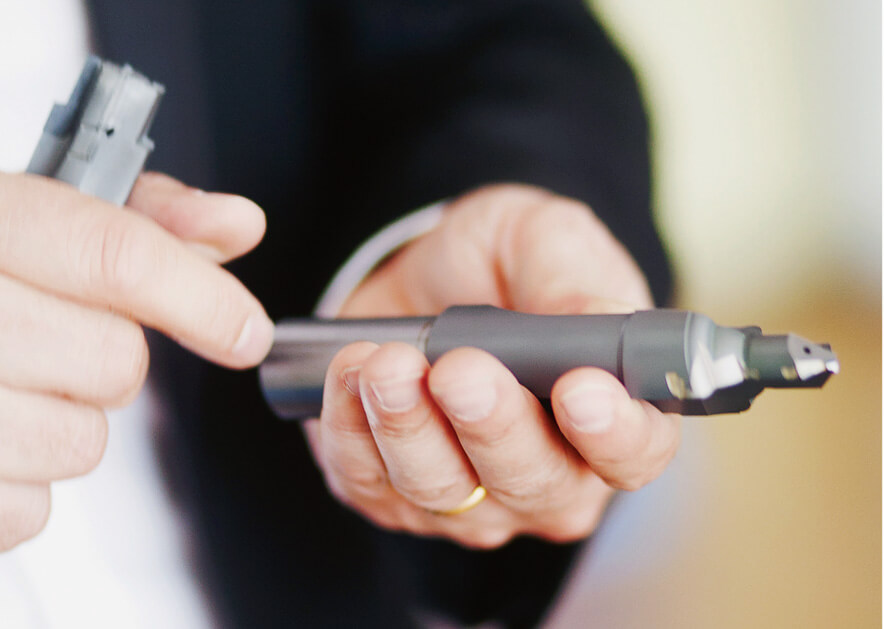
Almost every tool is unique and produced in small batch sizes. Each one has to be designed, computed and programmed from scratch. We’ve adapted our structure to this.
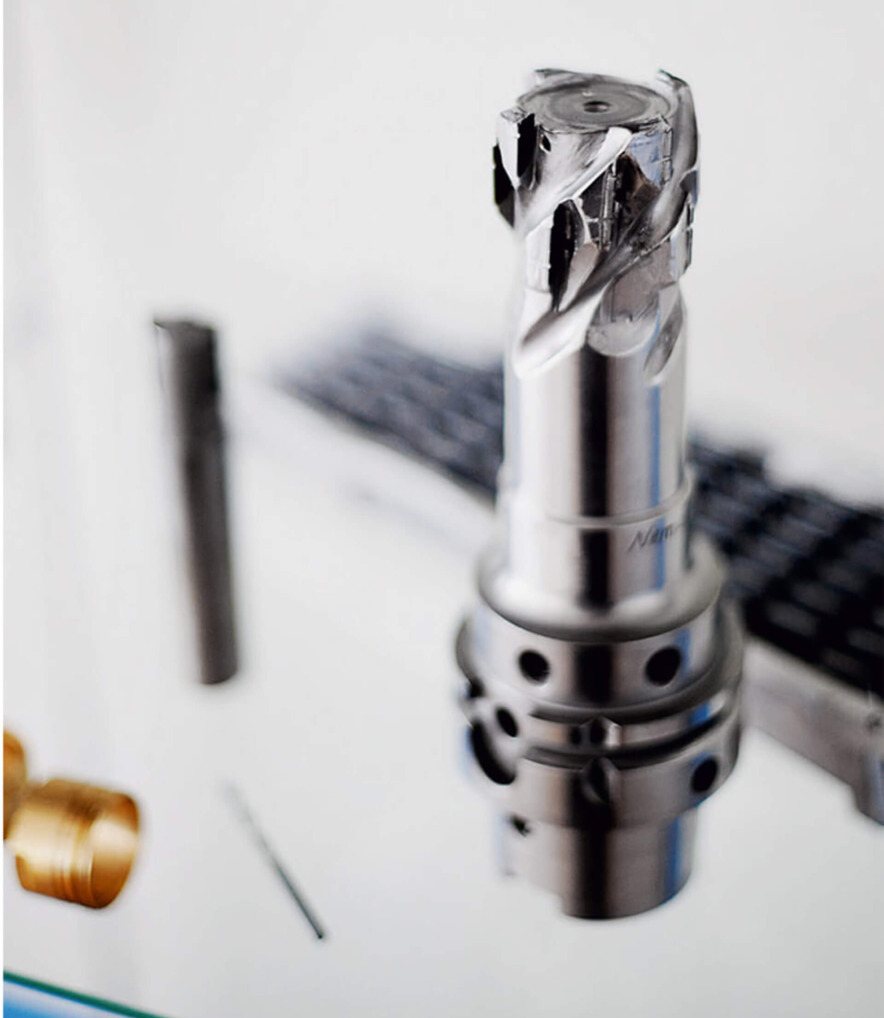
Lütticke produces rotating tools with more than two cutting edges on the new system with its automatic tool changer.
Mr Weinberger, let’s talk about your fully automatic tool changer. What is it for and how does it work?
Weinberger: I have to admit that getting started was difficult. For Lütticke and our partner Mitsubishi, it was the first system of this kind. In its current, initial state, a robot aided by a tool changer loads a FA 20 VS with new tools for wire-cutting around the clock. The system is specifically intended for the fabrication of rotary tools that have more than two cutting edges. For the extensions planned for 2014 and 2016, we intend to integrate another wire-cutting machine in the system. At present, the tool changer can be loaded with a maximum of 15 tools. With interim extension, we plan to increase this figure to 30 and, in its final state, to 50.
What are the difficulties involved?
Weinberger: When we order a new wire-cutting machine – say from Mitsubishi – we get a complete system with tested software. In this case, the tried-and-tested software wasn’t available. The software for the control of the cell comes from GTR and the machine from Mitsubishi. Problems at the interfaces are practically inevitable. But we’ve got to give credit to Mitsubishi. Their staff always came round straightaway to track down the error source and remedy it. We’ve now overcome all the teething troubles. The system has been running totally smoothly for the last three and a half months and we haven’t had any system-related failure. Self-critically, I have to admit that we underestimated the problems beforehand and didn’t do all our homework. Not all the tool dimensions were precisely logged and the zero points were not all clearly defined.
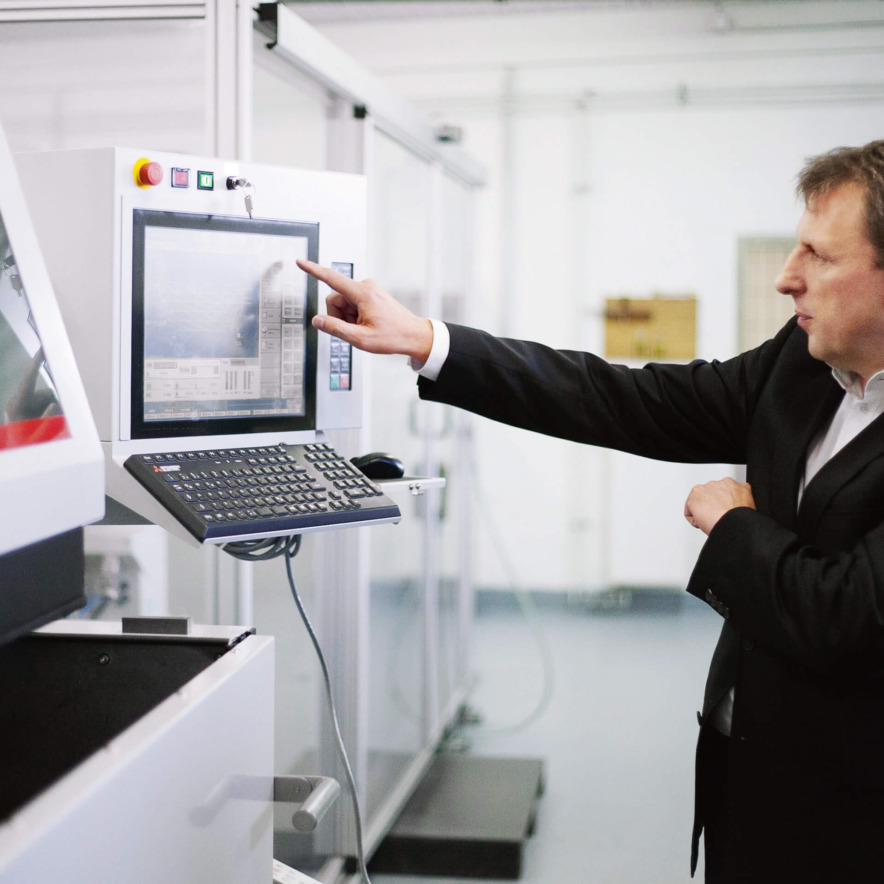
A big advantage of the system is its intuitive operation.
“We have of course tried out a number of rival products over the years, but we weren’t impressed
by the trials.”
Mr Weinberger, how did you solve these problems before the installation of the robot cell?
Weinberger: Basically we didn’t. We had the ideas and got the machine system going before we got the first job. Only afterwards did we take on work. This way we didn’t get under too much pressure. As I mentioned earlier, our customers expect delivery to deadline. With the new automation strategy, we’ve been able to significantly boost our sales, and they’ve risen by about 30 %.
For the first time we’ve been able to adopt totally new tooling strategies and machine rotary tools with even greater precision, as it is our aim to improve speed and precision. We believe that we can only hold our own as a German-based company if we can produced high-precision and high-grade tools with an attractive price/performance ratio.
Mr Weinberger, you’ve been conducting research together with the Fraunhofer Institute in Berlin into the optimisation of the subtractive machining of CRP materials. What’s the idea behind this?
Weinberger: Together with SGL Carbon and the Fraunhofer Institute, we want to develop an entirely new cutting material. With Mitsubishi’s support, we want to determine the optimum production parameters and cutting geometries for the machining of CRP materials and wood with the aid of all-ceramic tools. Our goal is to develop a tool that at top speed during high-speed cutting is able to absorb the process heat well while also permitting higher feed rates.
We thus wish to reduce the burns that often arise during the machining of wood to a minimum.
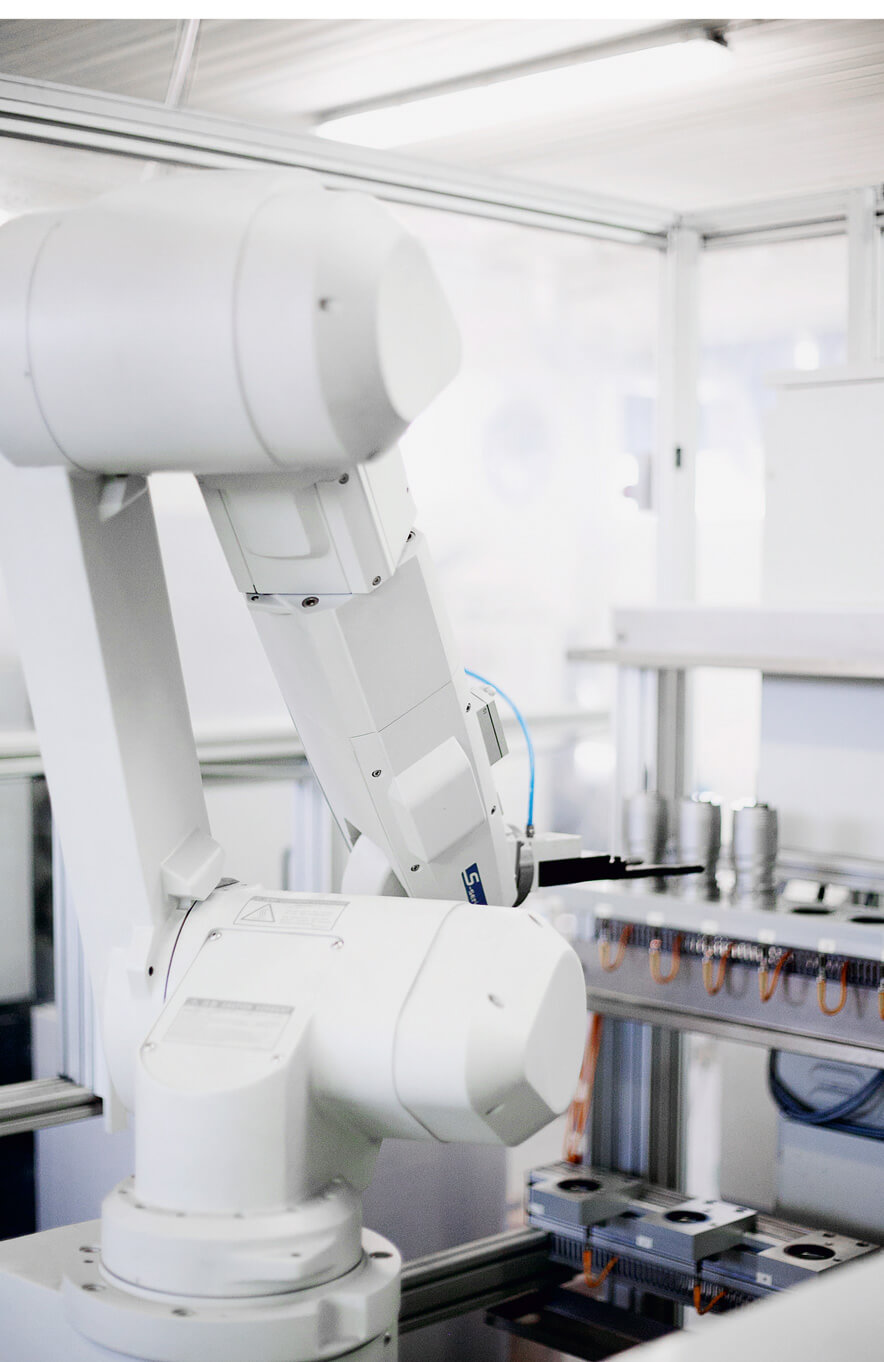
This system makes it possible to produce many different tools in small numbers.
Are there any other projects?
Weinberger: In another project, we are working together with Mitsubishi on the EDM profiling of diamond grinding wheels. This project has already reached the industrial testing stage. We see applications in the glass industry and in the precision grinding of mills with knurled toothing.
We are currently working here with metal grinding wheels. But the first attempts to produce grinding wheels bonded in a synthetic resin matrix with conductive filler have gone well.
When will you be publishing the findings?
Weinberger: The initial findings on the profiling of grinding wheels are already available. The final report on the research project devoted to the development of technology for all-ceramic shank tools for CRP and GRP machining will be published in May 2014.
Mr Weinberger, thank you for the interview.
Since its founding in 1979, Lütticke GmbH has been concerned with machining solutions for industry. While the company initially served exclusively the regional market, it now has its sights on Europe. With its innovative products for machining, it has developed into a dependable supplier to the automotive industry and automotive parts suppliers. Other focuses can be found in the machining of CRP, GRP and graphite and abrasion protection. In the last 10 years alone, the product range has grown to about 10,000 tools, machined typically in batch sizes of 3 to 5 pieces as well as 100 to 500 pieces. One of its specialities is high-grade special tools with cutting edges of PCD (polycrystalline diamond) and CBN (cubic boron nitride).
In the last few years, Lütticke has invested about EUR 4 million in its modern machine park and in efficient automation solutions. Together with reputed partners, the company researches and develops, among other things, blade geometries for the machining of CRP materials and the high-precision profiling of diamond grinding discs with wire EDM.
The company’s backbone is its 16 highly skilled employees who,
together with the committed managers Britta and Stephan Weinberger, stand for punctual delivery, precision and innovation. So that it can continue to meet its high standards of quality in the future, Lütticke successfully trains machinists.
In the coming years, the company aims to increase its market shares, expand its foreign business and grow at its current site with further automation and innovative further development in the special tool sector.
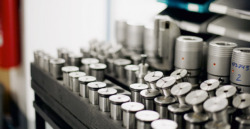
Fields marked with a * are mandatory.
Mitsubishi Electric Europe B.V.
German Branch
Mitsubishi-Electric-Platz 1
D - 40882 Ratingen
Sales
Tel.: +49 (0)2102 / 486 - 6120
edm.sales@meg.mee.com
Service
Tel.: +49 (0)2102 / 486 - 7600
edm.hotline@meg.mee.com
Applications
Tel.: +49 (0)2102 / 486 - 7700
edm.applikation@meg.mee.com
Spareparts
Tel.: +49 (0)2102 / 486 - 7500
edm.parts@meg.mee.com